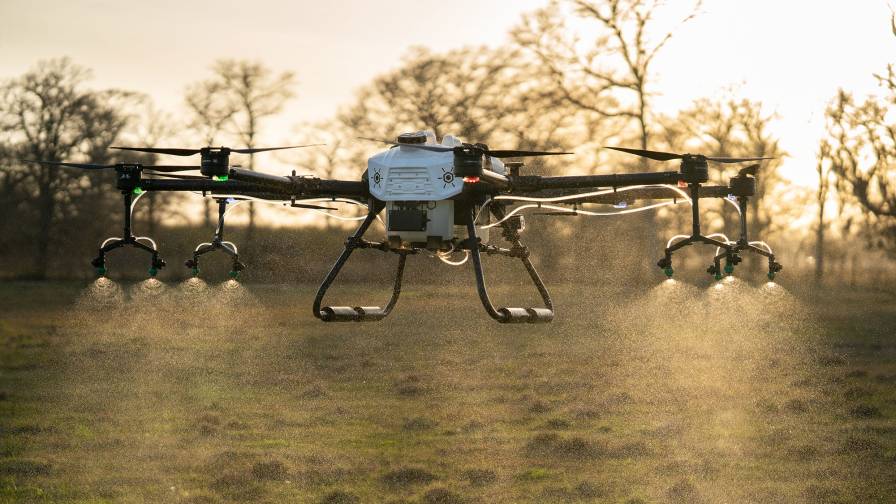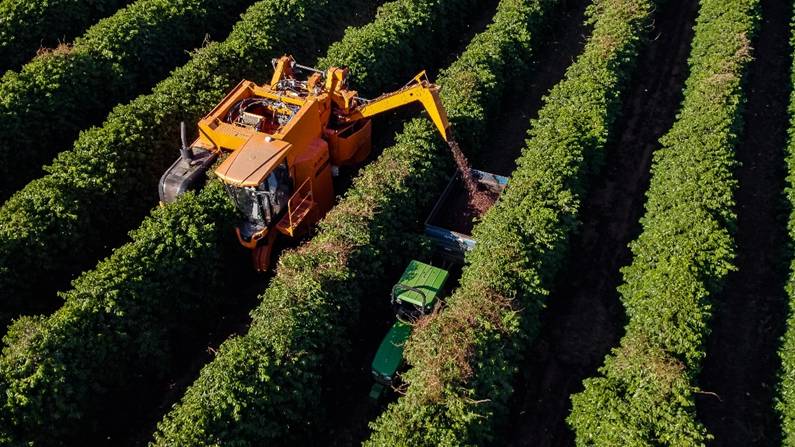How Digital Farming in Brazil Is Taking Aerial Application to the Next Level
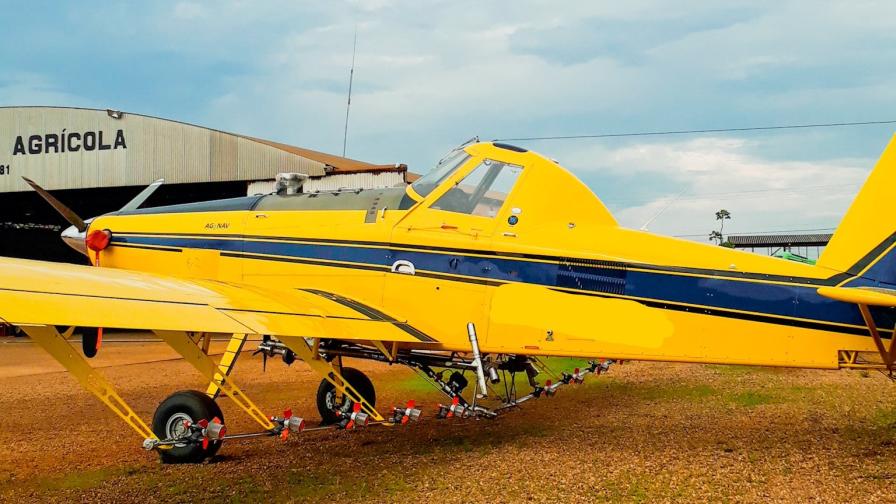
The AT-502B aircraft from U.S.-based Air Tractor is one of the most popular planes for aerial application in the world, most notably in Brazil.
Spraying with agricultural aircraft has been gaining a lot of space in Brazilian agribusiness due to its efficiency in covering large spray areas. According to the National Union of Agricultural Aviation Companies, SINDAG, in 2019 a fleet of 2,194 spray aircraft was used in Brazil, making it the second largest fleet of this segment in the world. Another fact that draws a lot of attention is that the year 2019 included 79 new agricultural aircraft in operation, with emphasis on the turboprop models that represented 57 of those aircrafts. U.S.-based Air Tractor manufactures most of the turboprop aircrafts purchased by Brazilian farmers.
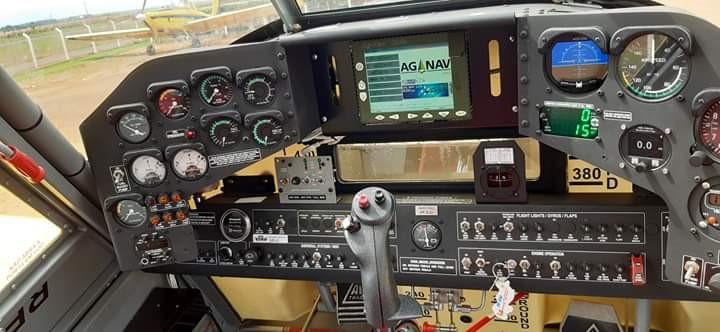
The AG-NAV Guia Gold guidance system has become an important technology used in Air Tractor aircraft.
The aircraft manufactured by Air Tractor have a package of newly embedded technologies, which assist both pilots during flights and those responsible for aerial application. One of the new technologies present in these aircraft is a GPS guidance system from AG-NAV Inc. The navigation systems most commercialized by the company are Guia Platinum, Guia Gold, and Guia Silver, where the systems are differentiated by their internet connectivity, information storage capacity, and registration of some information.
This article is based on spray data from Air-Tractor’s AT-502B aircraft. The aircraft uses the AG-NAV Gold navigation system that logs flight details during operation. The purpose of this article is to demonstrate the importance of opening flight maps, their correct analysis, and the identification and correction of possible aircraft calibration errors.
Data were collected in the 2019/2020 harvest on a farm in the municipality of Tabaporã, MT, located 330 meters above sea level, 11 ° 18’36.81 “south latitude and 56 ° 49’17.44” west longitude, in soybean culture.
The aircraft data was collected via pendrive, with a frequency of 7 in 7 working days, and the data were analyzed with the AG-NAV VIEW software. This software interprets all flight logs and recreates parameters such as flight speed in the lanes, spray volume applied per hectare and total, valve open time for application, maneuver time and various other parameters that assist in the verification of application quality and pilot efficiency in carrying out activities. The software also brings us a detailed report of the events in each applied range, with information on distance from the application range, average speed, spray volume applied, sprayed hectares, rate in liters per hectare, time with the valve open, time with closed valve and operating time.
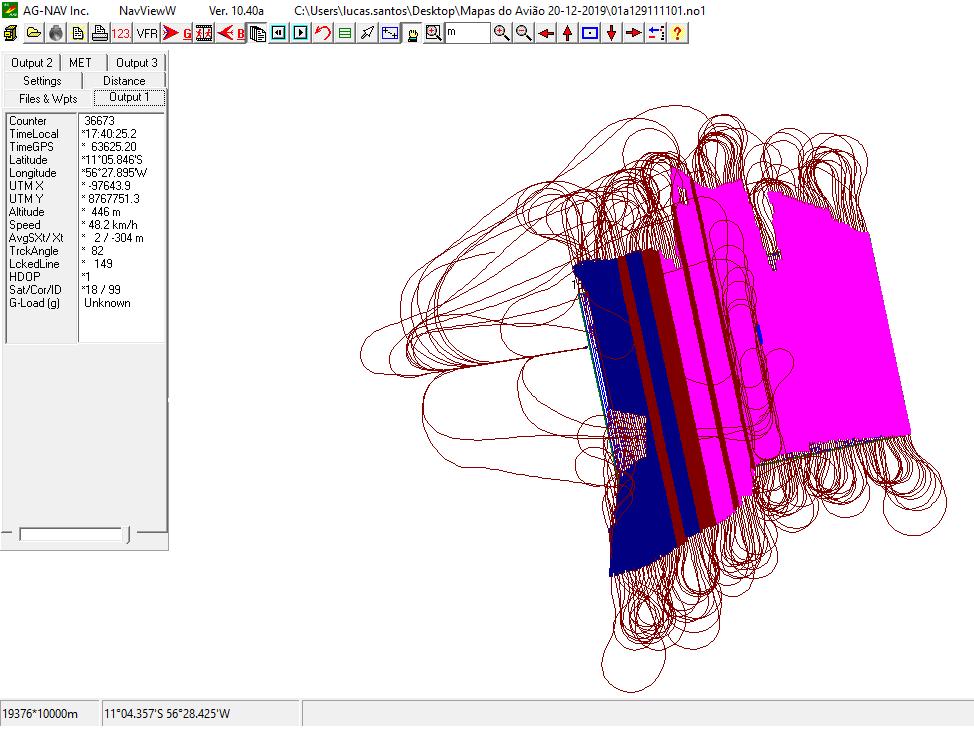
AG-NAV View software during application map opening.
The data were collected between November 11, 2019 and December 18, 2019, totaling 37 days of application records, which resulted in 92 flight logs during that period. During the analysis of the application data, it was found that the recommended dose for the application of 6.00 L / ha, was not consistent with the final average presented in the report generated by the software. After some analysis and investigation it was identified that the parameter of “Pulses Per Liter” was poorly calibrated, causing such anomaly.

Flow values by application ranges (incorrect).
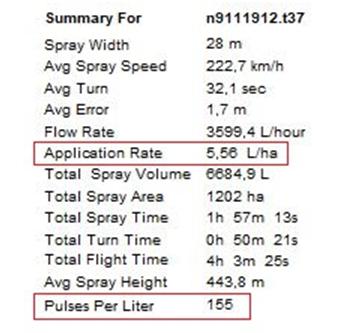
The parameter “Pulses Per Liter” indicates the number of pulses that the sensor will generate for liter of flow, which will pass through the application turbine. This parameter must be adjusted on the AG-NAV Gold panel for a correct application of the desired dose. After some tests it was found that the best configuration for this aircraft model is 145 pulses per liter, a configuration that obtains a variation of less than 0.2 L / ha.
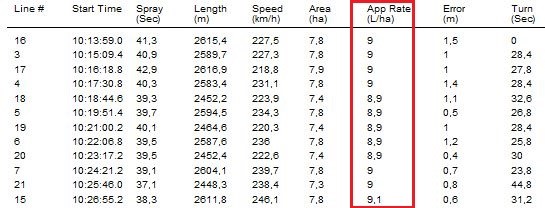
Flow values by application ranges (correct).
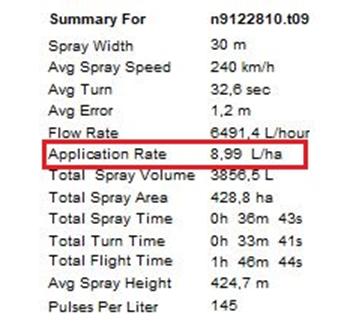
Correct mean flow values after calibration of Pulses Per Liter.





